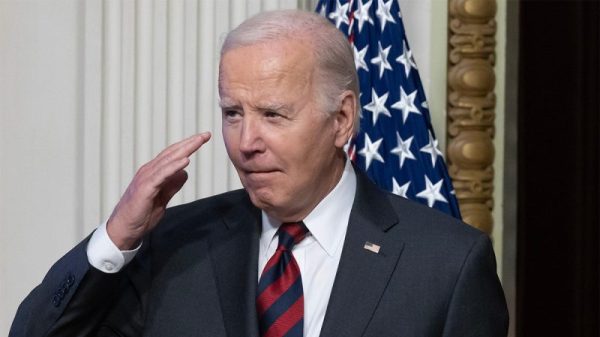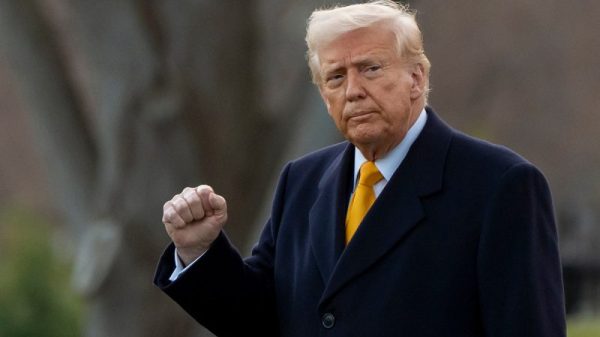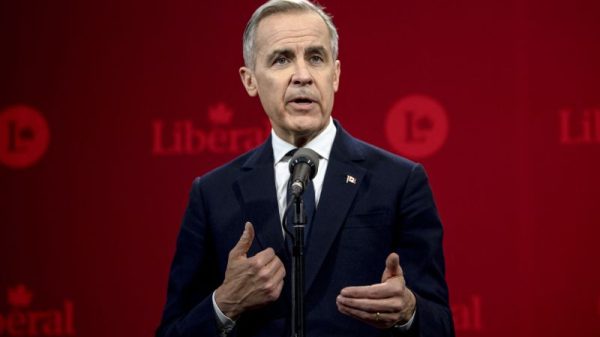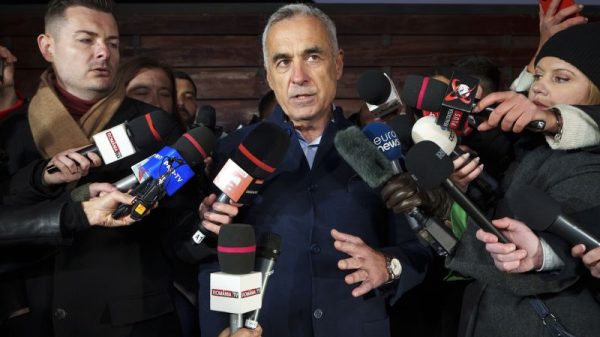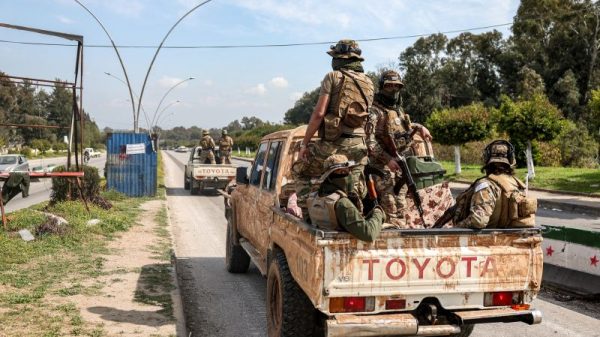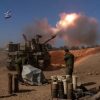Ukraine will soon face its second winter at war, and the bold campaigns of a year ago that saw significant gains in Kharkiv and Kherson seem a distant memory.
The Ukrainian military is now waging a war of intense attrition against stubborn and larger Russian forces along a front of nearly 1,000 kilometers. It is still desperately short of air power, and offensive action will be disrupted by the deteriorating weather.
The Russians are likely to launch another campaign to cripple Ukraine’s energy infrastructure, plunging its people into a dark winter. On the battlefield, the Russians have adapted. Next year’s defense budget will be 70% higher than this year’s. They are in this for the long haul.
But the Ukrainians are also adapting, after a stuttering start to the counteroffensive.
As Franz-Stefan Gady and Michael Kofman argued in The Economist, “Ukrainian soldiers’ ability to master Western tech quickly led to misplaced optimism that the time it takes to develop cohesive fighting units could be short-circuited.”
Now they’ve returned to a style of warfare they know best, using small groups of mobile infantry to test entrenched Russian defenses. It’s also appropriate to the circumstances now, because scores of Russian drones spotted any concentration of forces and directed massive artillery fire against them.
Small and nimble is the answer.
Ukraine is not prepared to risk the casualties that an ambitious mechanized offensive would bring.
This style of warfare will be less affected by the mud and mist of the winter months. “The weather can be a serious obstacle during an advance. But considering how we move forward, and we mostly advance without using the vehicles, I don’t think it will heavily influence that stage of counteroffensive,” Tarnavsky added.
That style of warfare is at one end of the spectrum. But the Ukrainians are also taking advantage of western supplies of longer-range artillery, both in the south and the east. And Kyiv has dramatically increased long-range missile and drone attacks against Russian military hubs: command centers, fuel and ammunition supplies, transport hubs.
Starve, stretch and strike
The chief of the UK’s defense staff, Admiral Tony Radakin, has dubbed this strategy as “starve, stretch and strike” – though much of the striking is currently done at a long distance.
Crimea has become a consistent target – the goal being to disrupt Russian supply lines and degrade the Black Sea Fleet.
Such attacks will likely continue and escalate as winter weather makes progress on the ground still more challenging. High-profile operations, like those this month against the Sevastopol shipyard and the headquarters of the Black Sea Fleet, are both a morale-booster and serve to remind Ukraine’s allies that it’s still on the front foot.
The expected introduction of German long-range Taurus missiles and US Army Tactical Missile System (ATACMs) will accentuate Ukraine’s focus on mauling the Russians infrastructure (though not beyond Ukrainian territory.)
As the online military publication WarZone observes: “The ability to deliver a 500-pound warhead with incredible force over long distances would spell big trouble for critical Russian logistics nodes and related infrastructure like bridges, as well as fortified command and control centers, all far behind the front lines.”
Over the past few months, Ukrainian forces have focused on degrading Russian air defenses, forcing the enemy to make painful choices about what to defend, especially as more defenses have been deployed in the Moscow region in the face of a persistent and irritating (if not very destructive) drone campaign.
If as expected Ukraine receives ATACMs with multiple warheads, it will be able to inflict far greater damage on distant Russian targets such as air bases. The head of the Defense Intelligence of Ukraine, Lt Gen. Kyrylo Budanov told War Zone: “Fighting Russian aviation using air defense systems is very costly and ineffective. Aviation should be taken out at the air bases.”
Removing them is going to be a titanic task. Russia’s military has learned from its mistakes.
Nevertheless, some of the best Russian units have suffered at the hands of the growing pipeline of western weapons entering Ukraine, especially extended-range artillery and cluster munitions sent from the US.
The UK Defense Ministry says that parts of Russia’s newly formed 25th Combined Arms Army (CAA) have been deployed to bolster units in the north, essentially plugging holes in an area where neither side is making any progress.
“With 25 CAA apparently being deployed piecemeal to reinforce the over-stretched line, a concerted new Russian offensive is less likely over the coming weeks,” the ministry said last week.
“The degree to which Ukraine can inflict disproportionate casualties and destruction on the Russians in the coming offensives will be an important measure of success,” says Mick Ryan, a former Australian general and author of Futura Doctrina, who has recently been in Ukraine.
Russian morale is hard to gauge. Ukrainian officials say many Russian prisoners of war have little sense of why they were fighting, and discipline is frequently poor. There is anecdotal evidence of this from other sources, but not to the degree that the Russian military machine would be damaged.
However, it’s been frequently (and wrongly) asserted that the Russians are running out of missiles and other munitions. True, Ukrainian officers have reported a sharp decline in incoming artillery fire in some places. But the coming winter will likely see a renewal of missile and drone attacks against Ukrainian energy infrastructure as the “heating season” begins.
Last year, Russian missile barrages damaged or destroyed some two-thirds of Ukraine’s energy facilities – yet failed to break civilian resolve. A series of strikes this month suggests another campaign is imminent.
But just as they seek to degrade Russian air defenses, the Ukrainians have made strides in improving their own.
“Last year, there was no Patriot, NASAMS, IRIS-T, SAMP-T or many other systems,” Prime Minister Denys Shmyhal said last week. “Our air defense system has become even more comprehensive and experienced … By the winter, it will become even stronger.”
Energy production has increased too. There are now seven nuclear power reactors working, with two more due to come online. More electricity can be imported from the EU than previously. Domestic production of natural gas has increased.
Distribution remains a problem. Autotransformers are in short supply, and there will still likely be power outages this winter. But the Ukrainian grid is more resilient than it was a year ago.
The long run
NATO Secretary-General Jens Stoltenberg, US Secretary of State Antony Blinken and others have spoken of “steady progress” for Ukraine on the battlefield, but among many western analysts and officials there is a sense of impending stalemate.
More and more, the talk is of the conflict stretching into 2025. History shows that beyond their opening stages wars tend to ossify. That is what happened after the so-called separatist conflict erupted in Donbas in 2014.
Ryan, the former Australian general, says Ukraine’s western partners must recognize and plan for this.
“By committing to support Ukraine for the duration of the conflict, the West can undermine Putin’s efforts to outlast Ukraine’s patrons,” he said.
US Army Maj. Robert Rose, writing in War on the Rocks, concurs. “Ukraine does not have the luxury of conducting maneuver (fast offensive actions). It needs to pursue unglamorous attrition, and we must be prepared to support it until it exhausts the Russian invaders.”
Europe and the United States do remain committed to supporting Ukraine on the battlefield and with financial support. But there are signs of fatigue. Doubts and squabbles percolate.
Ukraine’s recent spat with the Polish government over grain exports showed that it is vulnerable to shifting political moods among allied countries. The election campaign in the US is underway among rival Republicans, and the extent of support for Ukraine is a divisive issue
The spring of 2024 is shaping up to be a potentially important phase in the conflict. Both sides will use the winter to re-tool. Then the first Ukrainian F-16s will be deployed, along with perhaps more ATACMs and other longer-range missiles (besides the growing indigenous production lines in Ukraine.)
That’s why the supply of western arms must accelerate, according to Max Boot at the Council for Foreign Relations.
“Failing to send sufficient weaponry to Ukraine simply increases the odds of the conflict dragging on indefinitely,” Boot said.
The Ukrainians will also be reading the political tea-leaves in the US and among those it regards as less enthusiastic European allies, assessing the state of the “coalition of the willing.”
In Russia, next year may see the war inflict greater economic consequences.
The Kremlin has forced home the narrative that defense of the motherland is in an existential battle; there is no public dissent. Sanctions have hurt but are not yet crippling; the price of oil is helping to limit damage to the state budget.
But with an economy increasingly devoted to sustaining the war machine (at least 6% of GDP will be spent on the military next year), there are growing stresses: labor shortages and inflation as well as a persistently weak ruble. Vladimir Putin will not want to cut social spending ahead of next spring’s election, when most analysts expect oil and gas prices to moderate.
Many variables will shape the future of this conflict next year. First, both sides must endure the mud, frost and mist of the winter months













